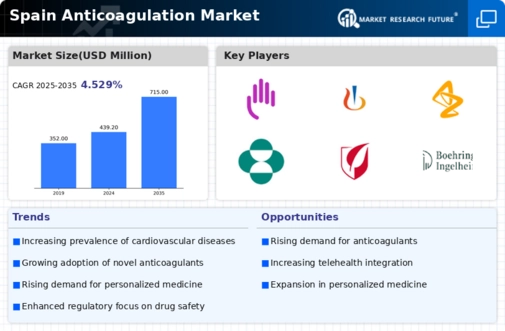The Spain Anticoagulation Market is characterized by a dynamic competitive landscape shaped by various pharmaceutical companies dedicated to developing innovative solutions for patients requiring anticoagulation therapy. The market has witnessed significant advancements in drug development, with a focus on novel oral anticoagulants (NOACs), which have gained popularity due to their favorable safety profile compared to traditional therapies. The presence of multiple players in the region has intensified competition, pushing companies to enhance their research and development efforts while also exploring strategic partnerships and collaborations to broaden their product offerings and market reach.
As healthcare providers increasingly prioritize patient outcomes, the focus on effective anticoagulation management has further augmented competition in this critical sector. Bristol Myers Squibb has established a notable presence in the Spain Anticoagulation Market with its commitment to innovation and patient care. The company is known for its strong portfolio of anticoagulant medications, which are widely utilized by healthcare professionals in Spain. Bristol Myers Squibb's key strengths lie in its robust research infrastructure and strategic investments in clinical trials aimed at demonstrating the efficacy and safety of its products.
The company is also recognized for its collaborative approach, engaging with healthcare practitioners and institutions to better understand patient needs and enhance treatment protocols. This customer-centric strategy, combined with an emphasis on educational initiatives and support programs for healthcare professionals, positions Bristol Myers Squibb favorably within the competitive landscape of Spain's anticoagulation segment. Novartis holds a significant position in the Spain Anticoagulation Market, driven by its commitment to improving patient outcomes through innovative therapies. The company’s strong portfolio includes key anticoagulant medications that have been well-received in the Spanish healthcare system.
Novartis's strengths stem from its extensive research and development capabilities, which enable the introduction of advanced treatment options and enhancements to existing products. In Spain, Novartis has actively pursued mergers and acquisitions to expand its therapeutic offerings and leverage synergies that enhance market reach. The company's strategic collaborations with local healthcare providers and emphasis on comprehensive patient support services have further solidified its standing in the market, demonstrating a dedication to improving anticoagulation management and patient care.





















